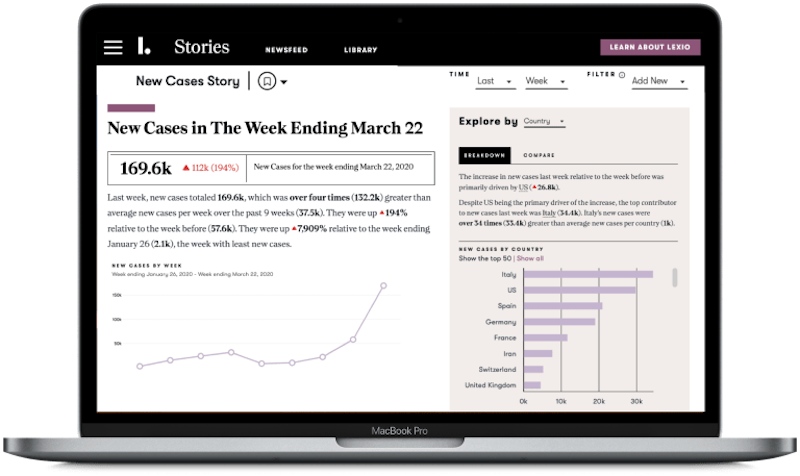
If you’re growing overwhelmed by the mountains of data being collected on the global COVID-19 pandemic, you’re not alone. Trust us.
It seems like everyone from IBM to the New York Times to Microsoft is developing their own coronavirus trackers, packing them with graphs and color-coded maps to help us understand the magnitude of the situation. But it can be hard to see the forest for the trees. Sometimes visualizations are just as confusing as the numbers they are interpreting.
Narrative Science, an AI-powered data storytelling startup, is trying to help with that by taking the coronavirus data collected by Johns Hopkins University and the World Health Organization and turning it into clear, succinct stories that interpret the numbers and graphs in an unbiased way. You can read the stories published so far here.
“It takes a certain skill set and mind to be able to take a map with bubbles on it or a line chart with multiple lines and understand what all that stuff means,” Dan Platt, the technical product manager at Narrative Science, told Built In. “At the end of the day, if someone wants to know how cases have been rising in Illinois versus New York, to be able to just have a paragraph that you can read is great. Now someone has that information ... it’s not so much about decision making as it is just helping people understand the world around them.”
Born out of Northwestern University’s journalism and computer science programs, Narrative Science has been producing stories like these for about 10 years. The platform has two AI-enabled products: Quill and Lexio. Quill uses natural language generation software to embed stories natively into a client’s dashboard. Lexio turns a company’s data into digestible narratives that users can simply scroll through as if they were looking at a newsfeed. Both of these tools were used to produce the coronavirus content.
So far, the company has published five stories, covering a variety of subjects including COVID-19 recoveries versus fatalities and the increase in cases organized by country. Going forward, Platt says Narrative Science plans to produce more stories about testing rates and he hopes to generate more granular analyses, going beyond just comparing countries and states. However, a lot of this depends on the quality of the data.
At the end of the day, Narrative Science’s mission is to help everyone make sense of all this data, providing digestible content with no agenda.
“You can always take numbers and kind of either fudge them or spin them, there’s always an excuse or a story behind something. With stories from data, that doesn’t exist,” Platt said. “The story is kind of the neutral arbiter.”




